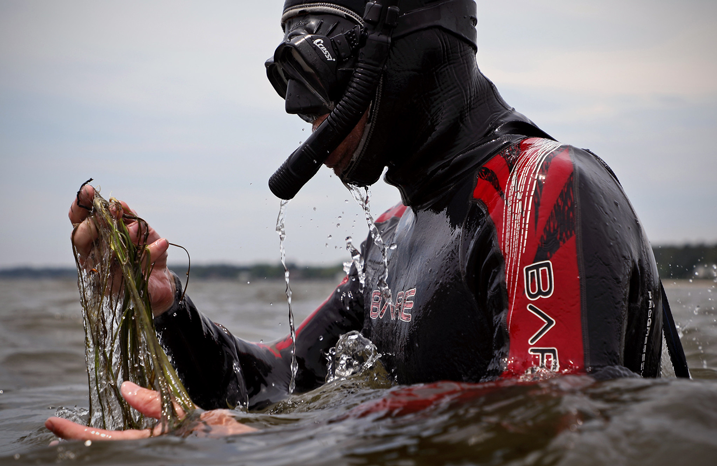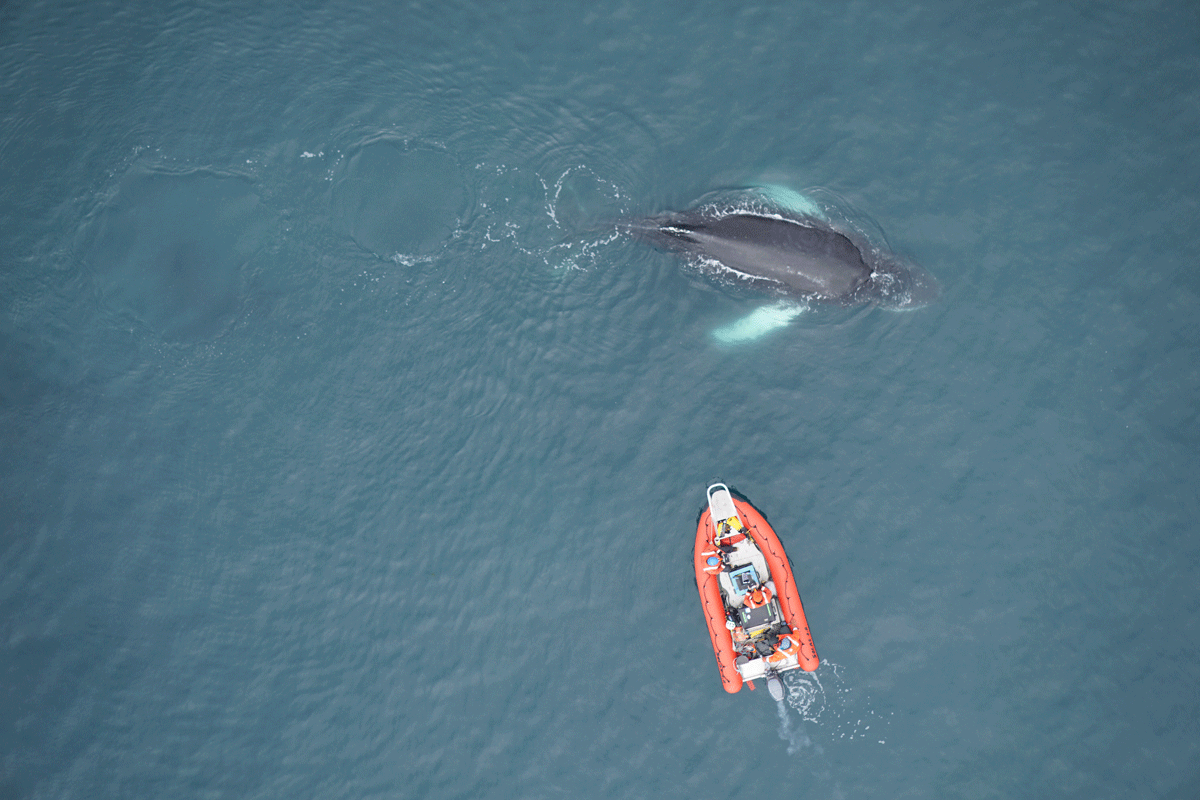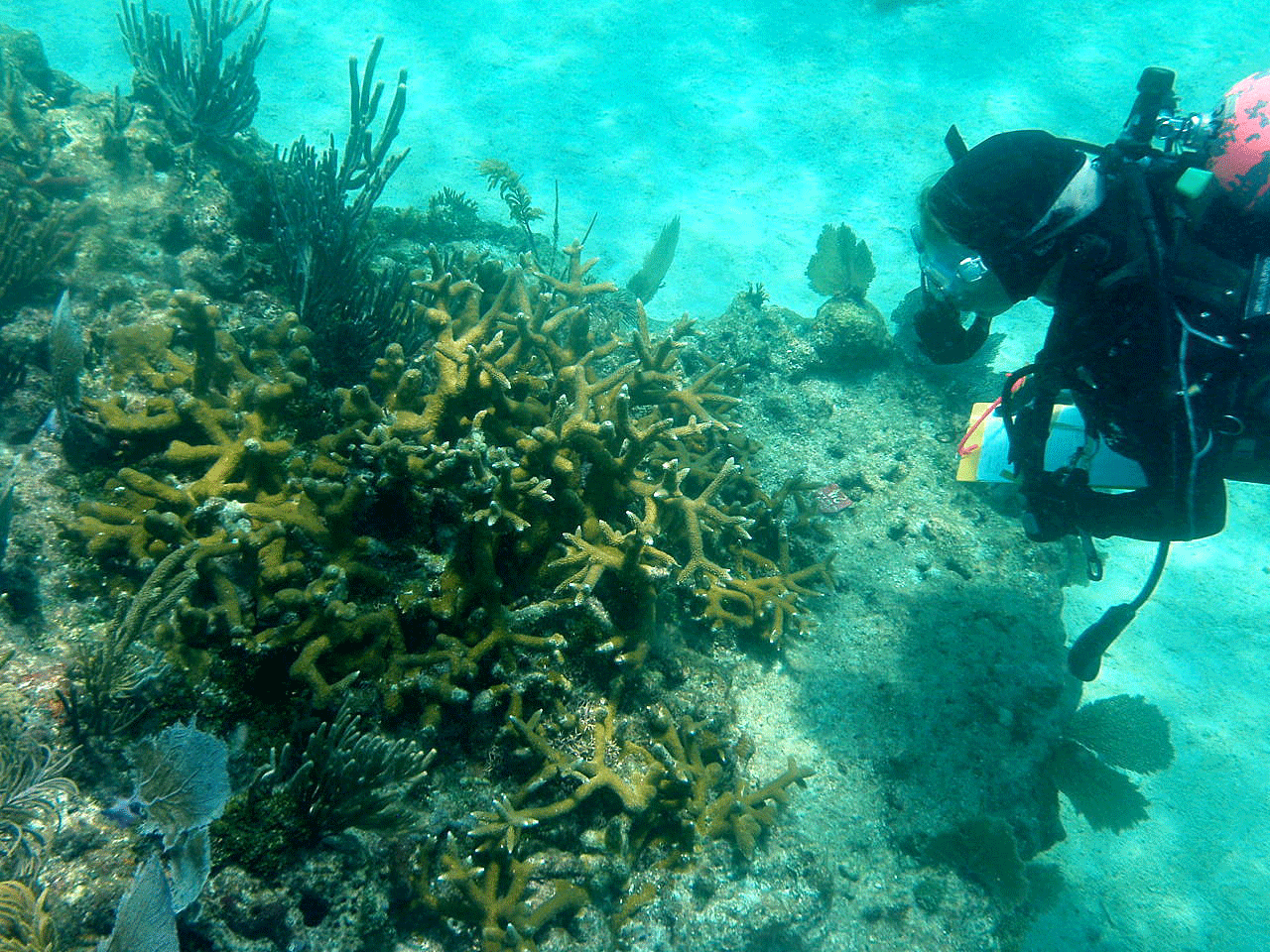A Sea Change for the Science of Sea Life
How a team of researchers is shepherding a cultural transformation in marine ecology
By Jenny Seifert of NCEAS and Kelsey Simpkins of Future Earth
From coral to whales, marine life is, arguably, how most people connect with oceans, whether they eat seafood, make their living from fishing, or have cultural attachments to species – even the air we all breathe is impacted by the oxygen phytoplankton exhale. However, there are significant disconnects in the science of monitoring our seas that could undermine our relationships with marine species.
Across the world, researchers are collecting loads of observational data about marine life, from population estimates to the expanse of marine habitats, but they are doing so largely independently from each other, using their own methods and institutional protocols, and relying solely on their own data.

The problem is, oceans are global bodies in a globalizing world. The fragmented scientific landscape only makes it harder to answer global-scale questions about ocean change, especially in ways that are useful for meeting international conservation targets, such as Sustainable Development Goal 14, which aims for the sustainable use of ocean resources.
But a team of researchers is on a mission to make globalization their advantage. They are working to connect the data and the people who are tracking the health and status of marine life by building a worldwide network, and it’s an endeavor they say will require a sea change in how marine ecologists work.
“Once upon a time, we could have had the hope of managing oceans by just taking our foot off the accelerator and hoping it would go back to where it was before. But, as with most of the planet, we’re beyond that stage. We’re in new territory,” said Nicholas Bax, a researcher with CSIRO Australia who is co-leading this team.
Charting these new waters, says Bax, will mean fixing the fragmented picture of the status of marine life, so that marine ecologists will be better able to answer big questions like which species require renewed efforts to save them and how can human activities adapt accordingly. “And that requires far more information than what we have been collecting before,” he said.
The network they are working to build will bring together national and regional ecological monitoring programs from around the world and function similarly to a health information exchange system for marine life, where scientists can easily share and access each other’s data and work more collaboratively in drawing bigger-picture conclusions.
“I think the scientific community has an obligation to be working together to the best of their abilities to solve these crises,” said Bax.

Indeed, since the dawn of marine ecology, the default has been closed data – kept private in isolated notebooks, hard drives, or servers, and likely not in a format that would make sense to anyone other than the person or institution who collected the data. Moreover, most sea life monitoring programs are small, working at the regional or national scale, and are often under-funded and under-resourced.
“So, the capacity to make any global conclusion, when the programs are so local and not scalable to larger scales, is very limited,” said Patricia Miloslavich from the University of Tasmania, who is co-leading the network-building effort with Bax and is a professor emeritus of Venezuela’s Simon Bolivar University.
Ultimately, the shift will mean transforming the data default from closed to open and following the open science principles of Findable, Accessible, Interoperable, and Reusable, colloquially called FAIR. But since open science is as much about connecting people as it is about connecting data, there is first a need to build and empower a community to generate the force behind the transformation.
“If people feel part of a community, they’re more willing to share their data,” said Bax. “And then once we have that community together, we talk about standard operating procedures – what is the standard for naming species, for measuring species, and what metadata do you use.”
The blueprint for building the community has entailed developing knowledge hubs around which existing monitoring programs can coalesce and, thus, serve as a framework for collaboration. To do this, the team has spent the past four years identifying the most measurable and socially meaningful aspects of ocean life that scientists monitor, scouring international agreements and conventions to find the points for common ground.
The resulting hubs are called Essential Ocean Variables and include both ocean habitats, such as mangroves and coral reefs, and marine organisms, from microbes to mammals.
For example, to rally a community around the macroalgae Essential Ocean Variable, the project helped establish the Global Ocean Macroalgal Observing Network, which will coordinate efforts across existing networks that monitor kelp and other seaweeds around the world, such as the Reef Life Survey and the Kelp Ecosystem Ecology Network, and enable the participation of new smaller-scale networks. The project also brought together several different communities of seagrass researchers, each with their own methods and data, to help them align their systems and share their data as part of the habitat Variable seagrass, thus allowing for a unified system for reporting observational data globally.
“The community aspect of any large coordinated effort is, in my eyes, the glue that holds it together,” said Erin Satterthwaite, a postdoctoral researcher with NCEAS and Future Earth who is supporting the project. “The more the community continues to develop, there’s just a lot more room for exchange of ideas – not only open data but open information between people.”
Satterthwaite has played a critical role in helping the team identify who is even out there monitoring ocean life and is creating a map of the global seascape of marine life observing programs – where they are, what areas they monitor, and where are the gaps in coverage.
“A lot of the value of bringing these networks and programs together is that you can share resources more efficiently and you can start to answer more national and global scale questions,” said Satterthwaite.
And the value of resource sharing is a matter of capacity building and equity. What hinders many monitoring programs from engaging in open science is a deficiency in training among researchers and data collectors in how to make data open and interoperable, as well as inadequate access to technology – many countries simply lack the resources to collect or process the data at a scale that would be usable for a global system.
“Most of the scientific capacity exists in the developed world, and many of the major issues facing the oceans are in the developing world. So, there is serious inequality around the globe,” noted Bax. “And by choosing not to share data, you are choosing to add to the inequality in the world. And I don’t think that’s something which most scientists would aspire to do.”

But once community, capacity, and the new data default are in place, the transformation won’t stop there, for the data and information within the network must then be put to use in policy.
“Because if you measure, measure, measure and just make papers, papers, papers, and these papers do not translate into policy, we’re not advancing,” said Miloslavich.
According to fellow team member Marjo Vierros, an independent scholar who specializes in marine policy and management, FAIR and open data will be fundamental to developing management actions that will reach the targets of SDG 14 and other global policy initiatives.
“It’s a whole linked chain of things that are required for response measures to take place. Just because you have the data and information, and you formulate a reasonable response, you still need to make sure the policymakers will actually listen to you and act on the best available data,” said Vierros, noting that getting policymakers to act on the data is a cultural shift all its own.
Bax agrees that getting policymakers to actually use the data will be as critical as making data open and comparable, and that will in part fall on scientists’ ability to deliver the information. Having the global network in place will help them provide the best-available information and, given the way the information culture is shifting globally, speak with a consistent message.
“Scientists need to get more engaged in the policy and decision-making process, so they can set up the questions in a way that can be answered by science,” said Bax. “I think now more than ever we need to be speaking in a more collaborative, more open, more considered way.”
The effort by this team is funded in part by the Program for Early-Stage Grants Advancing Sustainability Science (PEGASuS) 2: Ocean Sustainability, which is administered through NCEAS and Future Earth, both organizations that work to promote and advance more connected science. The network of ecological monitoring programs they are building is part of an even larger marine science network that includes the physical and biogeochemical sciences, called the Global Ocean Observing System.
Cover image: Whale researchers observe a humpback whale in Stellwagen Bank National Marine Sanctuary off the coast of Massachusetts in the United States. Photo Credit: NOAA, NOAA Fisheries permit #14245, with minor cropping and provided under Attribution 2.0 Generic Creative Commons license.
This piece is also available at the NCEAS website here.
DATE
November 6, 2019AUTHOR
Jenny SeifertKelsey Simpkins
SHARE WITH YOUR NETWORK
RELATED POSTS
Future Earth Members Join UN Ocean Conference in Barcelona
Future Earth Experts Contribute to “10 Must Knows” as a Guide to Preserving Biodiversity
SOLAS Researchers Publish Special Feature on Air-Sea Interface in Changing Climate